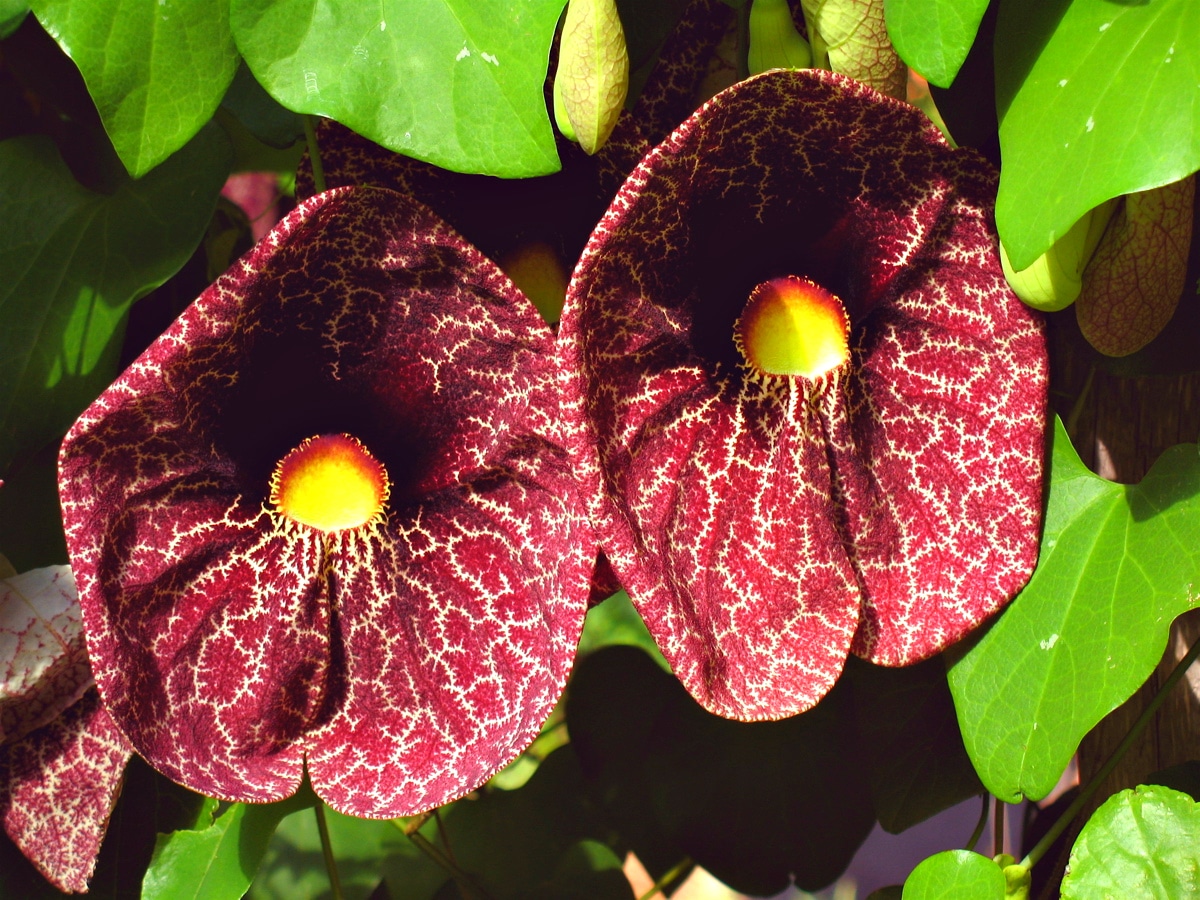
Image - Flickr / PINKE
The genus of plants Aristolochia They are characterized by having very curious flowers, which is why they are interesting to grow in gardens, or if you prefer on terraces or balconies, where they will look great if their stems are allowed to hang.
Its leaves also have ornamental value, although we are not going to fool you: it rises significantly when the plants bloom.
Origin and characteristics of the Aristolochia
The Aristolochia are perennial herbs or evergreen or deciduous shrubs depending on the species they grow, most of them climbing habit, native to the tropical, subtropical and temperate regions of the world, except Australia. They develop a stem from which simple, cordate and membranous leaves sprout, and which have an alternate arrangement.
Its flowers have the peculiarity of not having a corolla. The perianth is covered with hairs inside, which act a bit like a fly trap. The calyx is divided into one to three parts, and has three to six teeth, but they are not always well distinguished as the sepals are joined.
To get pollinated, those of many species give off an intense and unpleasant aroma that attracts insects. These, once they reach the flower, have to be introduced into them. And when they leave, their bodies will have been impregnated with pollen, which will end up in other Aristolochia flowers if there are any nearby.
Main species
The most popular are:
Aristolochia baetica
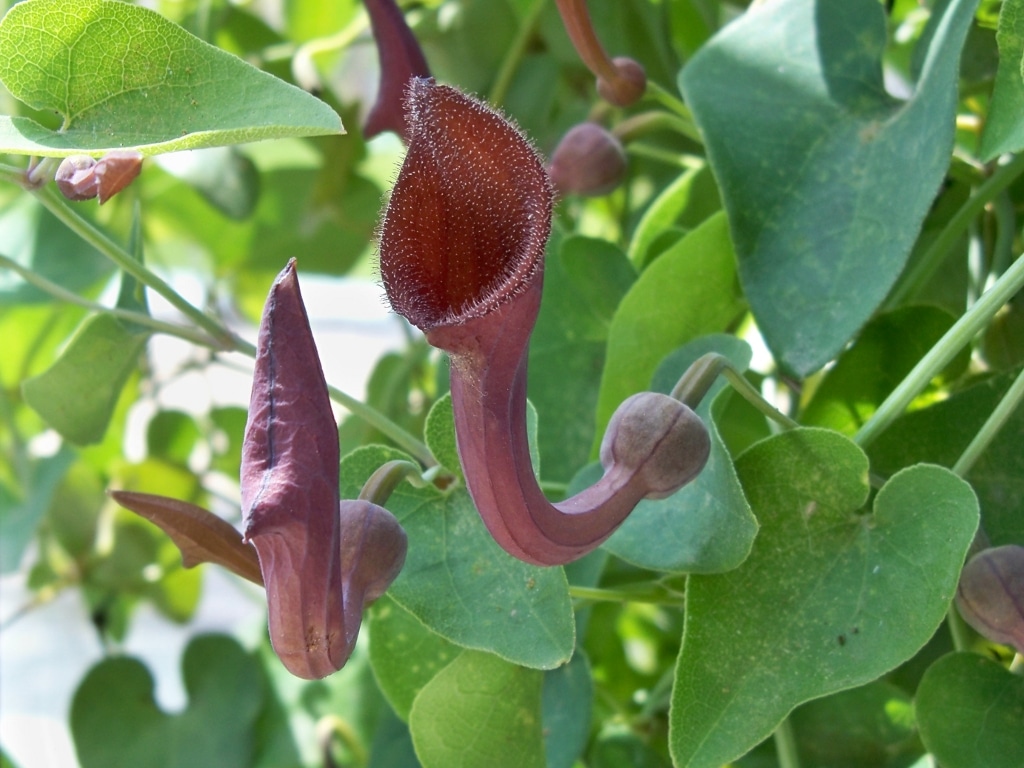
Image - Wikimedia / Daniel Capilla
La Aristolochia baetica It is a perennial climbing herb native to North Africa and the south of the Iberian Peninsula that develops stems from 60 centimeters to 4 meters. Its flowers measure 2 to 8 centimeters, and are brownish-purple in color.
Aristolochia clematitis
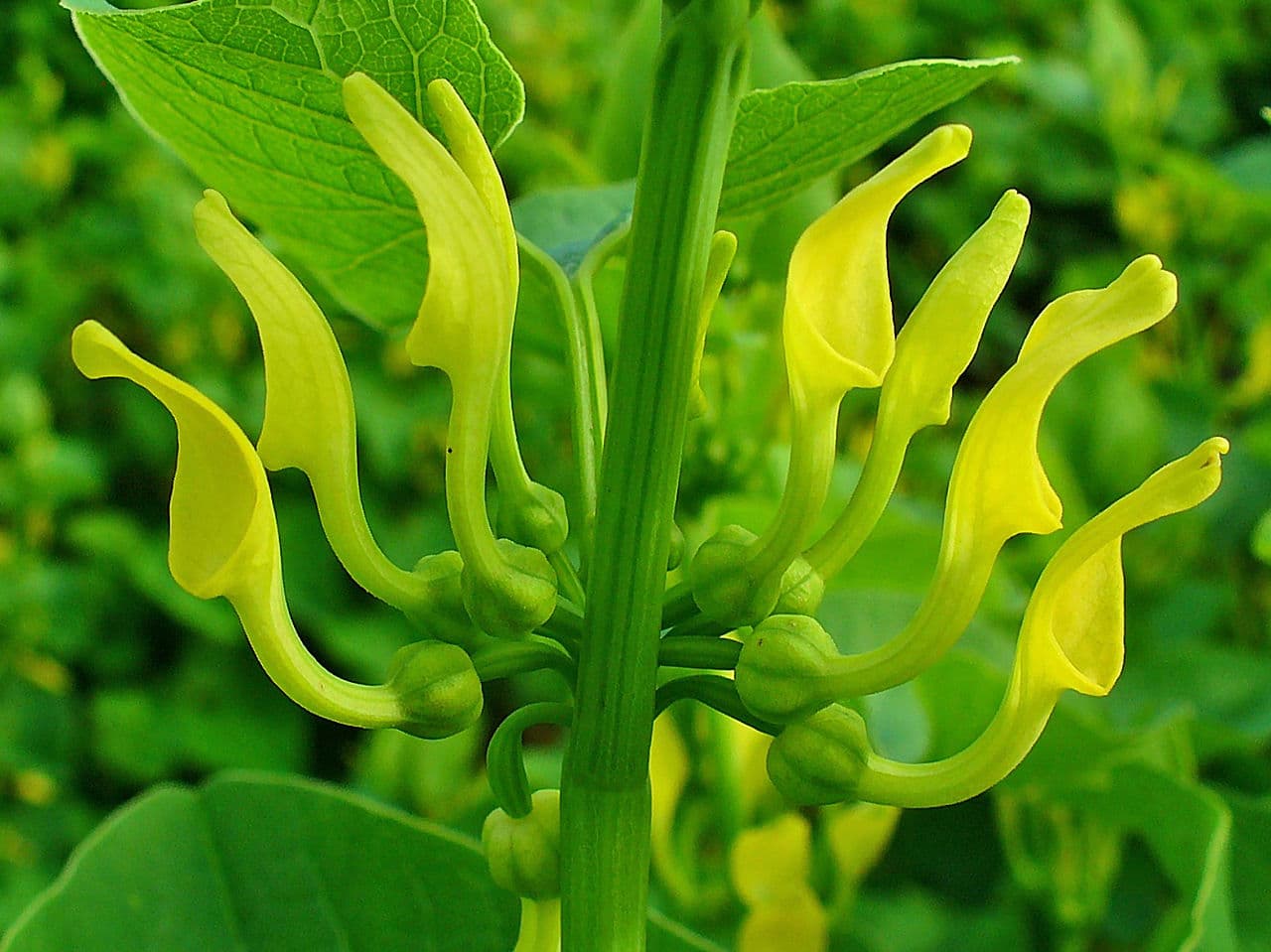
Image - Wikimedia / H. Zell
La Aristolochia clematitis, known as clematitide, is native to southern Europe and North Africa. In Spain it is common in Catalonia. It is a perennial plant, herbaceous type, which reaches about 50 centimeters in height. Its leaves are green and give off a bad smell. The flowers are yellow.
In the Valencian Community (Spain), it is considered a plant in danger of extinction, which is why its collection is not allowed.
Uses
In Egypt, during the time of the pharaohs, when a person was bitten by a poisonous snake, this plant was used to heal those wounds. Nevertheless, Its consumption is not recommended as it can cause kidney problems and cancer, like all species of the genus.
Aristolochia elegans
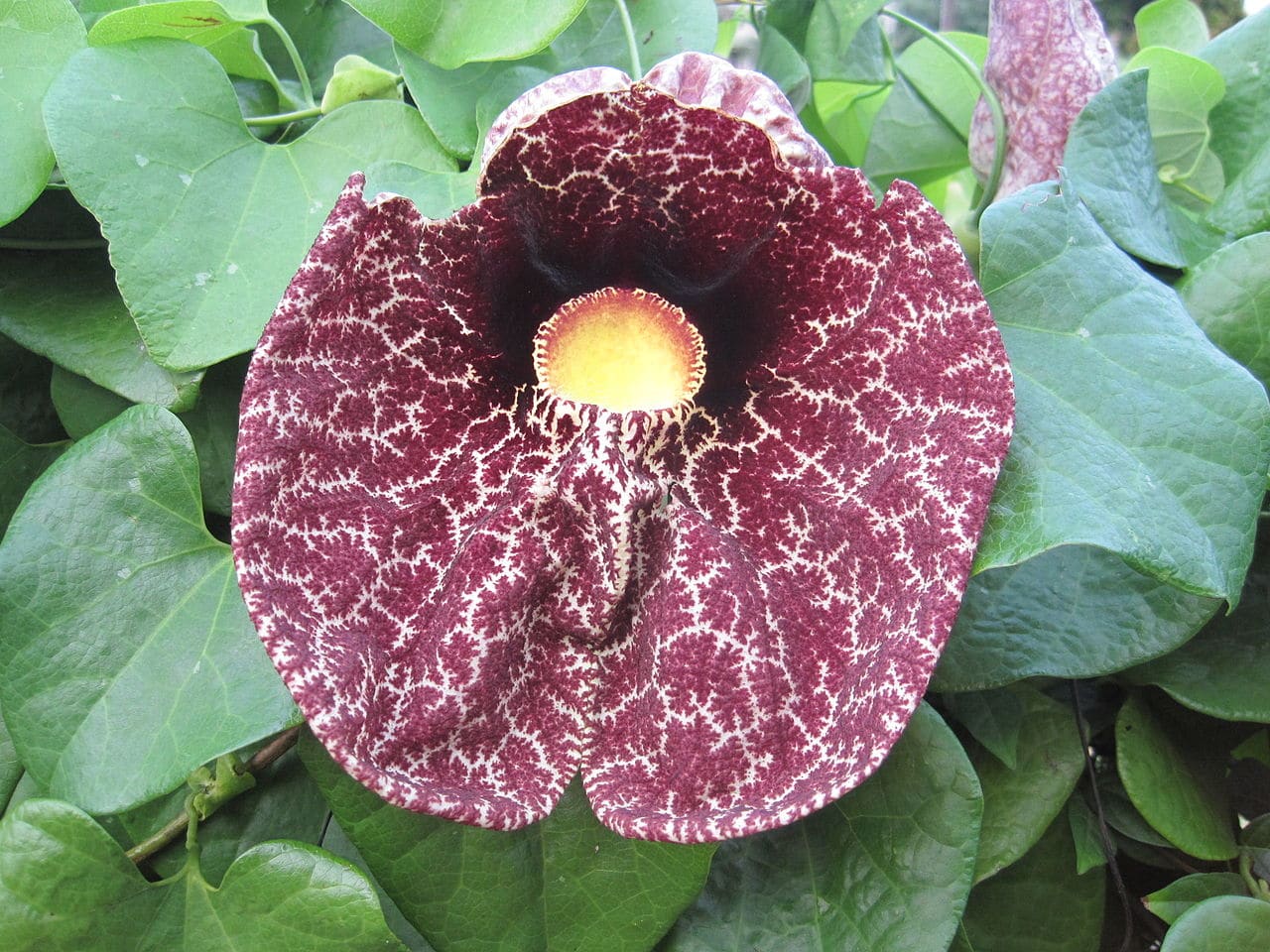
Aristolochia elegans is a scientific name that has become synonymous with Aristolochia littoralis, the latter being the name, let's say, more correctly, of the plant. It is an evergreen climber native to Brazil, which has become naturalized in the United States and Australia. It is popularly known as a calico flower, and develops stems up to 8 meters tall. Its flowers are dark purple.
Aristolochia gigantea
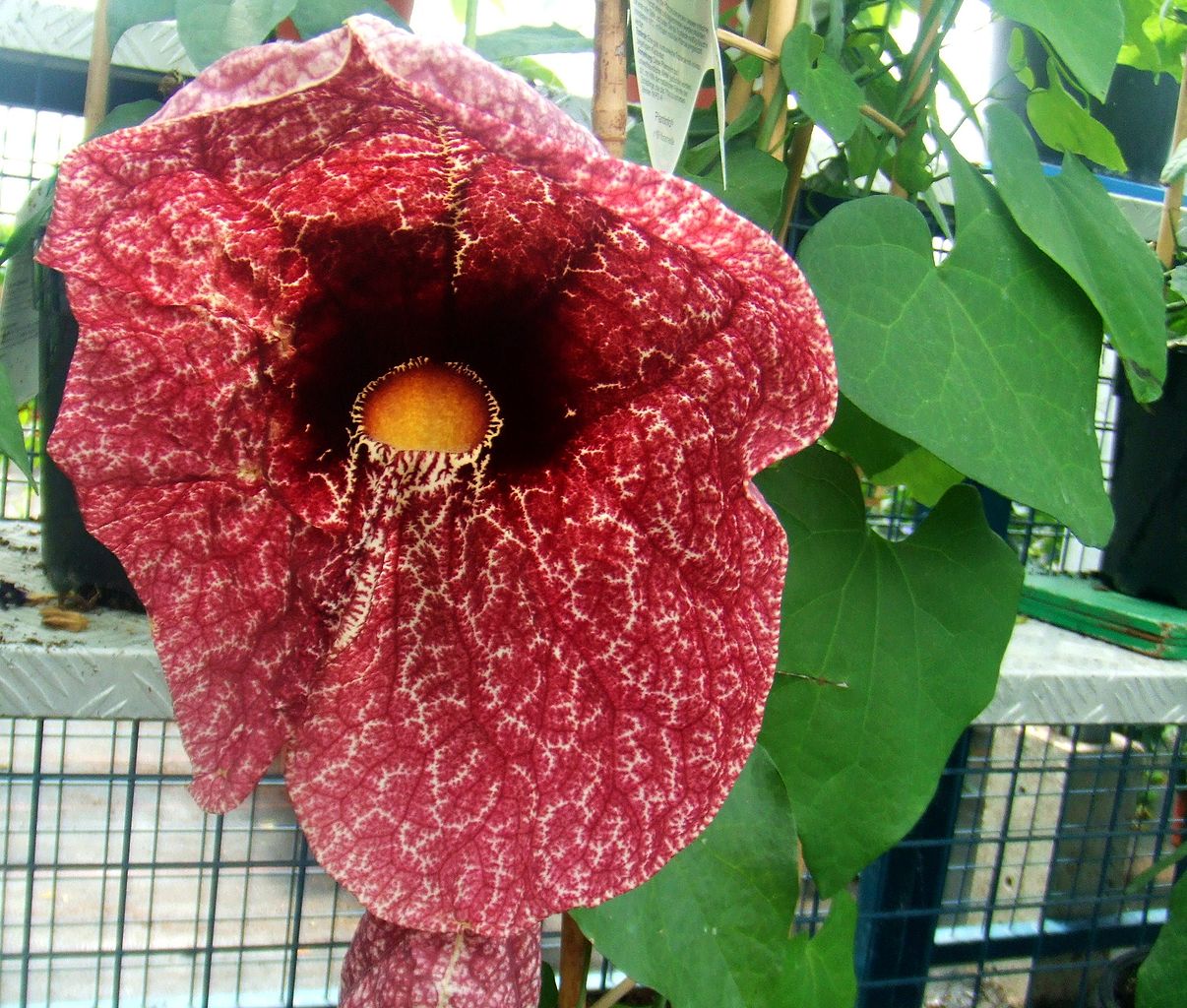
La Aristolochia gigantea, known as giant aristoloquia, is an evergreen climber native to Brazil, Colombia and Panama. It is quite similar to the previous one, although she it reaches 10 meters instead of 8. In addition, its flowers are large, up to 20 centimeters, and unlike other species, they hardly smell.
Aristolochia grandiflora
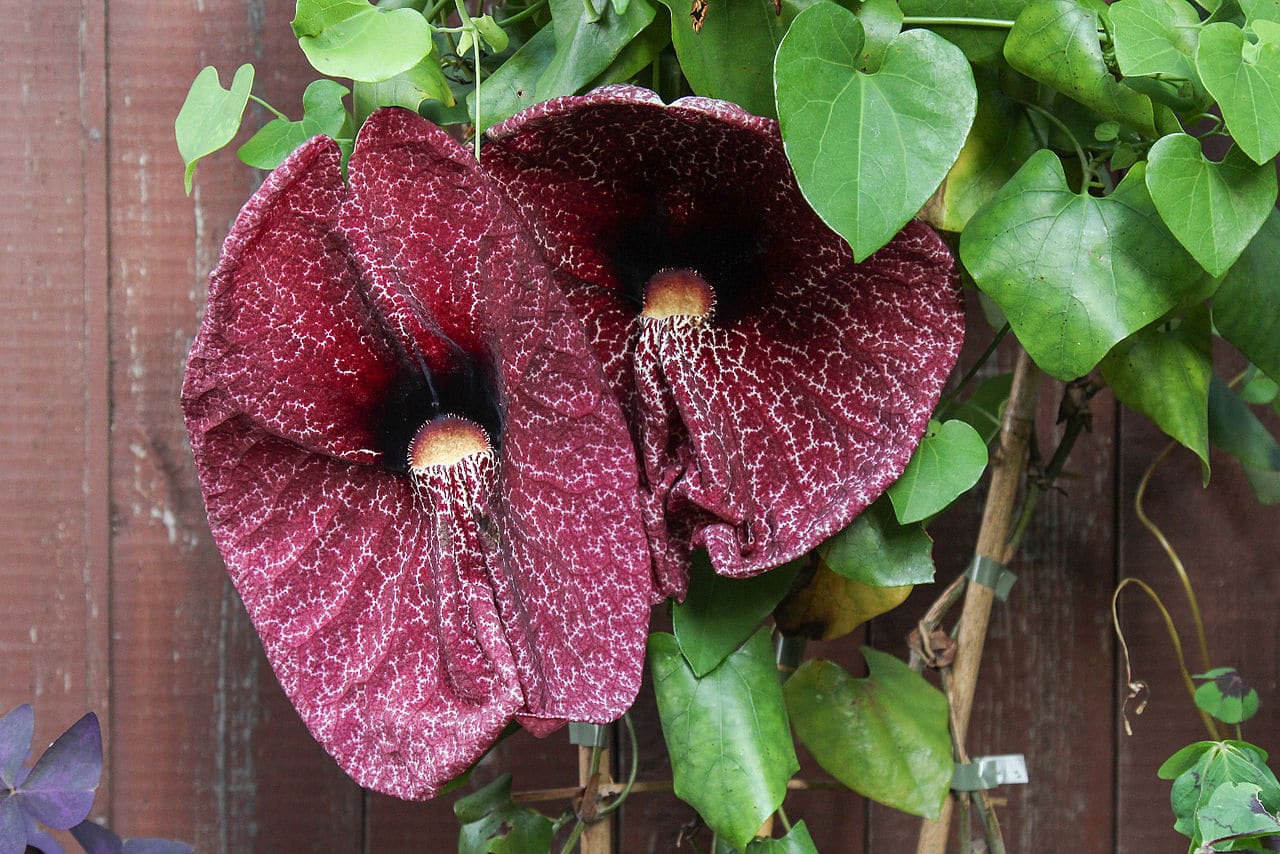
Image - Wikimedia / Maja Dumat
La Aristolochia grandiflora is a deciduous climber native to the Caribbean, and has been introduced in Florida (United States). Reaches a height of 4-5 meters, and its flowers are greenish with dark red nerves. They emit a very unpleasant smell for humans.
Uses
It has been used to cure snake bites, but its consumption is discouraged.
Aristolochia longa
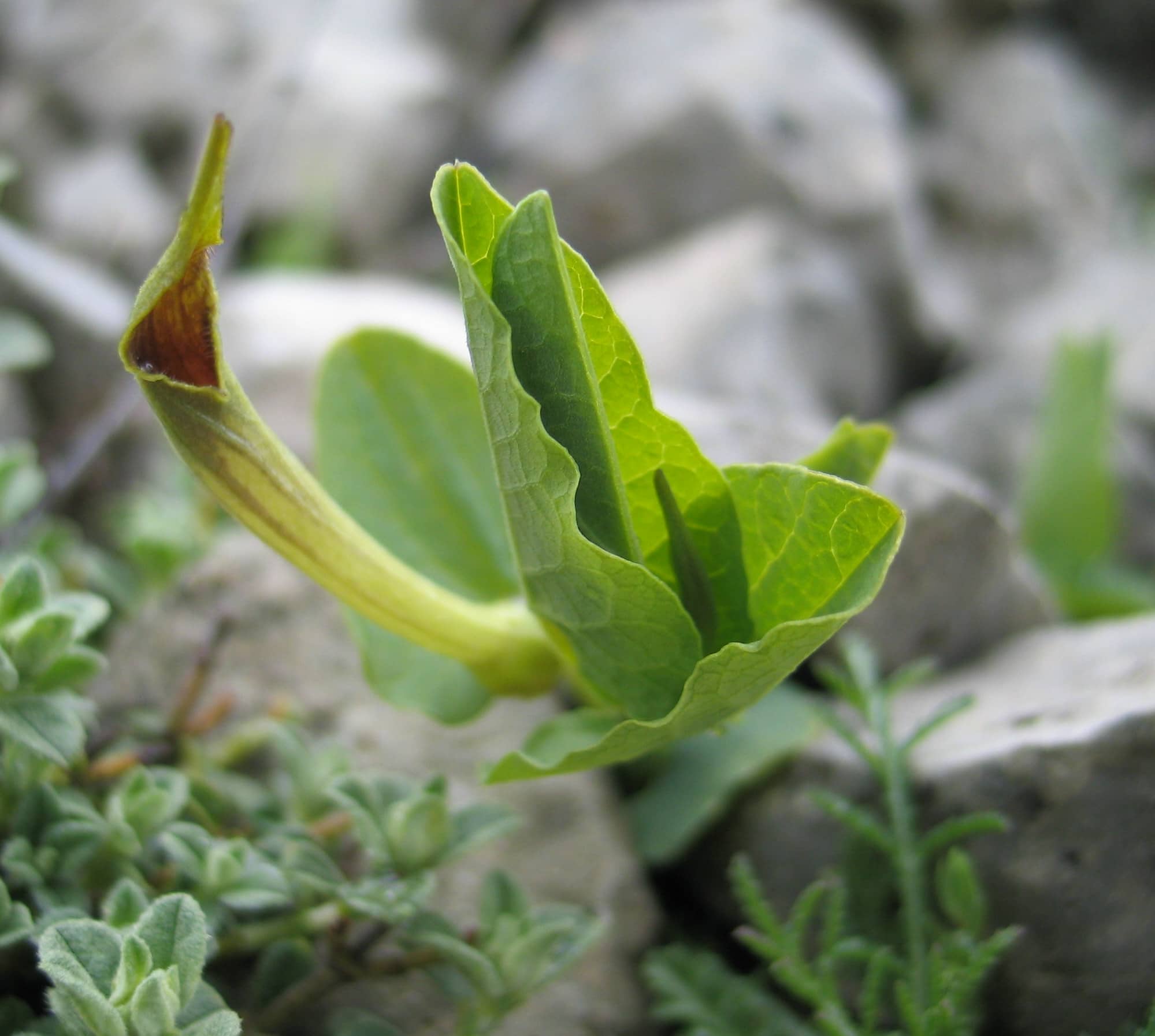
Image - Flickr / Juan José Sánchez
Name Aristolochia longa Is synonymous with Aristolochia fontanesii. It is a perennial plant native to Africa, which has been introduced in the Canary Islands (Spain). Reaches a height of about 40-60 centimeters, and its flowers are tube-shaped, yellow-green in color.
Aristolochia paucinervis
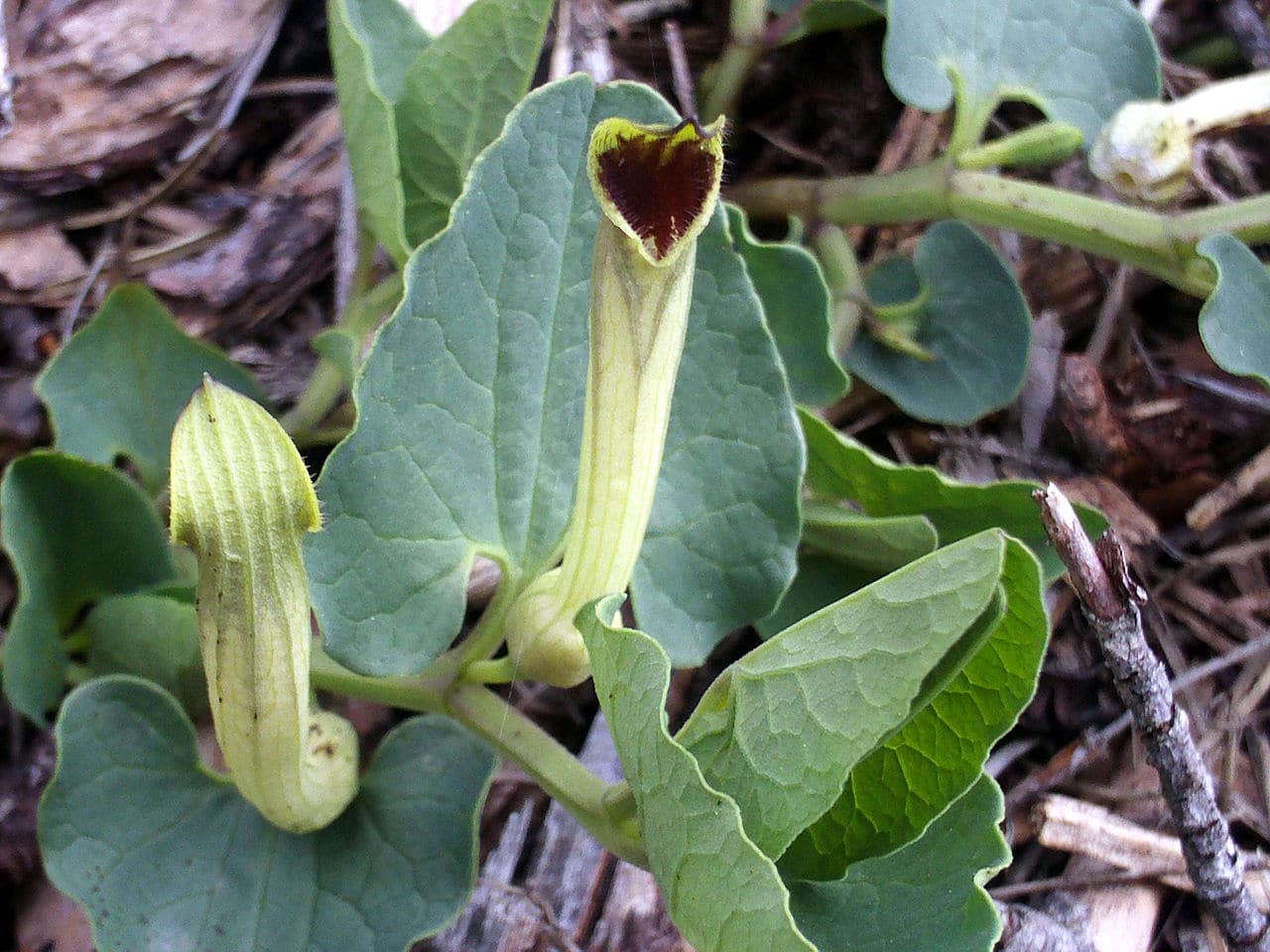
La Aristolochia paucinervis, known as pistoloquia, is a perennial herbaceous plant native to the Mediterranean region and Macaronesia, which reaches a height of 40 centimeters. Its flowers are brownish in color.
Aristolochia pistolochia
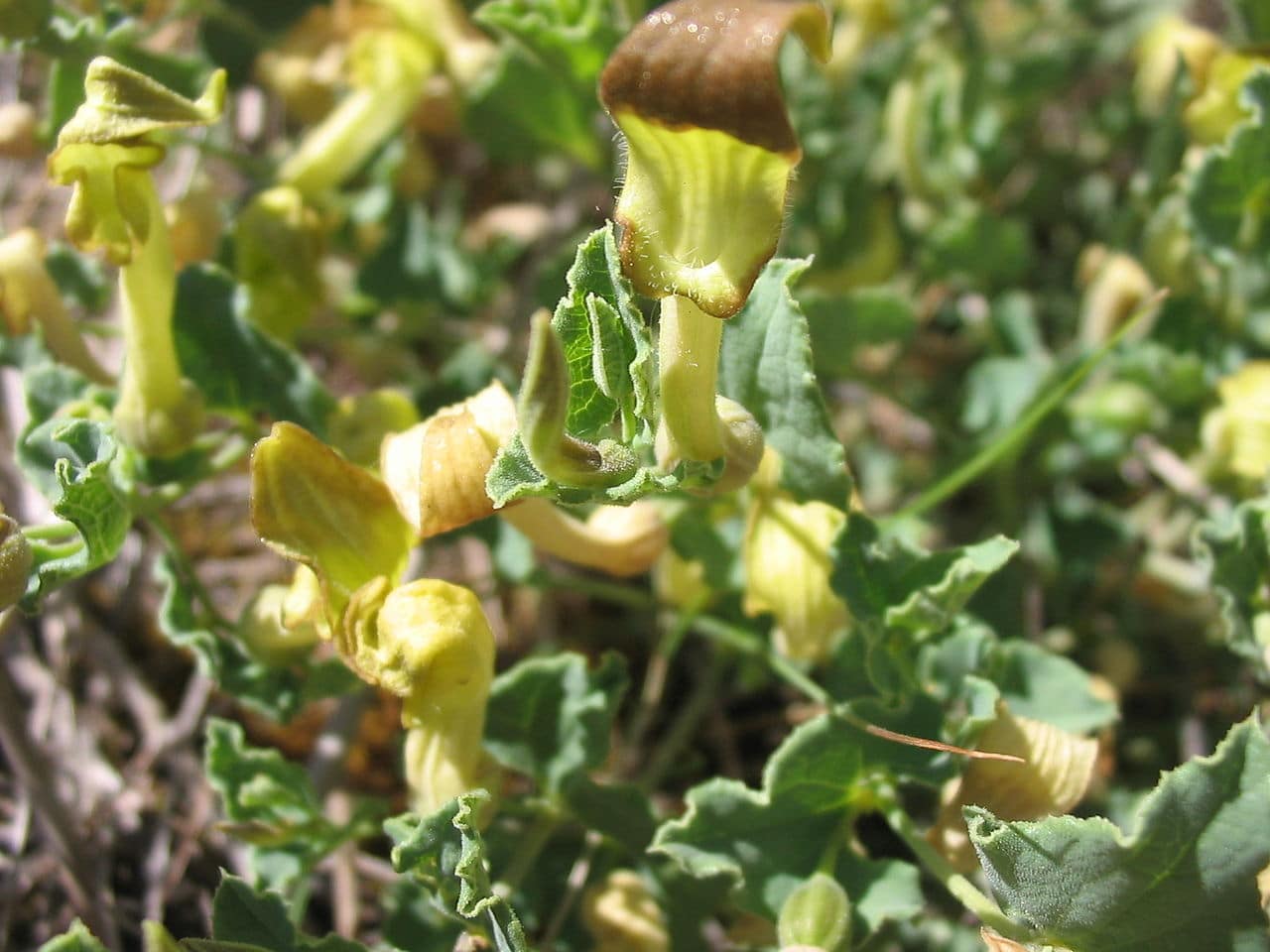
Image - Wikimedia / Alberto Salguero
La Aristolochia pistolochia It is an annual cycle herbaceous plant native to the south of France and the Mediterranean region of the Iberian Peninsula. Reaches a height of 30 centimeters, and its flowers are yellow, with a dark red interior.
What are the care that must be given to them?
There are many species of Aristolochia that are cultivated as ornamental plants, and all of them are climbers. Therefore, it is important to know how to take care of them:
- Location: if you are going to be outside, you have to put it in semi-shade or shade; but if you are indoors, it is necessary for the room to be very bright.
- Soil or substrate: must have a good sewer system. If the water remains puddled, its roots will not support it. For this reason, it is also essential that, if it is grown in a pot, it has holes in the base.
- Irrigation: it is necessary to ensure that the earth does not remain dry for a long time. In summer the watering will be abundant, while in winter it will be watered only from time to time.
- Subscriber: it is advisable to throw it organic fertilizer in spring as well as in summer.
- Multiplication: by seeds or cuttings in spring.
- Transplant: if necessary, it will be transplanted in spring.
- Rusticity: most do not resist frost, except for Mediterranean species (a. clematitis, A. paucinervis, among others), which do withstand temperatures of up to -4ºC.

Image - Wikimedia / CT Johansson
Do you like Aristolochia?